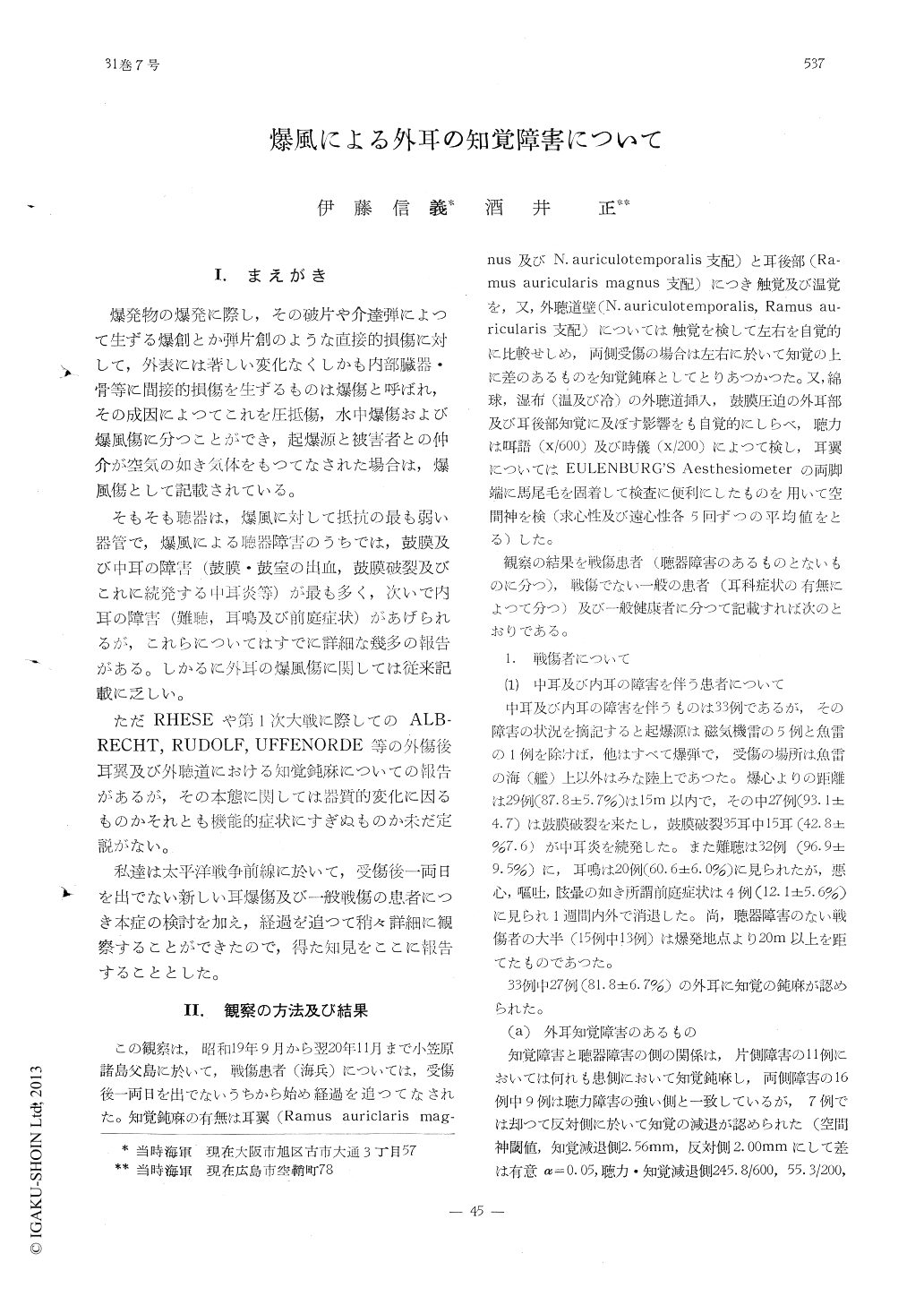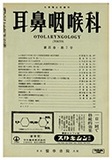- 有料閲覧
- 文献概要
- 1ページ目
I.まえがき
爆発物の爆発に際し,その破片や介達弾によつて生ずる爆創とか弾片創のような直接的損傷に対して,外表には著しい変化なくしかも内部臓器・骨等に間接的損傷を生ずるものは爆傷と呼ばれ,その成因によつてこれを圧抵傷,水中爆傷および爆風傷に分つことができ,起爆源と被害者との仲介が空気の如き気体をもつてなされた場合は,爆風傷として記載されている。
そもそも聴器は,爆風に対して抵抗の最も弱い器管で,爆風による聴器障害のうちでは,鼓膜及び中耳の障害(鼓膜・鼓室の出血,鼓膜破裂及びこれに続発する中耳炎等)が最も多く,次いで内耳の障害(難聴,耳鳴及び前庭症状)があげられるが,これらについてはすでに詳細な幾多の報告がある。しかるに外耳の爆風傷に関しては従来記載に乏しい。
That air concussion of an explosion causes sensory disturbances of the external ear (ear lobe and external auditory canal) is a fact that was observed during the Wold War I. No adequate explanation of this condition has been given since.
During the World war II the authors observed that the men fighting on the front line were affected with disturbances of auditory organs by 81. 8%. Patients with sensory disturbances of the ear were carefully observed under esthesiometer. Such sensory disturbances were not recognized among other patients who did not show ear involvements : symp-toms showed no abatement after the war. The authors conclude that it may be due to establishment of cutaneous sensory nerve injury from the concussion of the explosion.

Copyright © 1959, Igaku-Shoin Ltd. All rights reserved.


